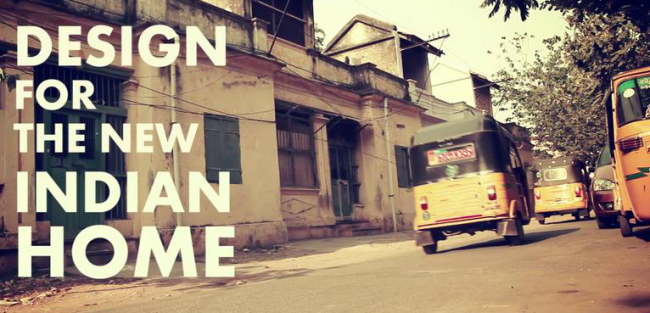Living Home: India, Creating New Furnishing Solutions for the Living Environment
 A multi-disciplinary team spent the Summer 2012 term investigating the living needs of low-income housing dwellers in India, and then building furniture prototypes for use in the high quality, low-cost housing championed by social entrepreneurship nonprofit Ashoka.
A multi-disciplinary team spent the Summer 2012 term investigating the living needs of low-income housing dwellers in India, and then building furniture prototypes for use in the high quality, low-cost housing championed by social entrepreneurship nonprofit Ashoka.
Over one billion people—32 percent of the global urban population—live in urban slums in emerging countries, with 500,000 more joining them each week. Relatively poor nations will build the equivalent of a city of more than one million people each week for the next 45 years. Embedded in such migration patterns and population growth implications is the critical need for affordable and safe housing.
For millions in India’s poor urban areas, a “home” means one room. In order to discover design options for creating furnishing specific to the needs of urban Indian communities, Art Center and Ashoka teamed up to explore the creation of sustainable, cost-efficient, and ready-to-market furniture prototypes.
The students were asked to incorporate environmentally responsible designs and to develop the furniture in close collaboration with community stakeholders and local craftspeople in India. Ashoka played a key role in facilitating the student’s collaboration with local and regional constituents, and the activity sites were strategically selected to maximize Ashoka’s existing infrastructure of partnerships. “Whenever we design, we’re always thinking about the people themselves. Is our work really addressing the people that are going to buy it? What do they want from it? What do they need from it? What do they need to feel from it?” -David Mocarski, Chair, Environmental Design.
The design brief of the project called for a paramount understanding of the potential Indian consumers of these furnishings. The studio was designed with a field research trip to Bangalore that was envisioned to provide the team with in-depth immersion of India’s low-income housing needs as well as a first hand experience of cultural and aspirational drivers of this population.
When they arrived in India, the students carefully documented their experiences. Using photography, video, and field notes, they gathered extensive data that enabled them continue the research process long after their return to California. Highlights of the trip included home visits, in which students had an opportunity to speak directly with families in low-cost housing, as well as tours of a sustainable fair-trade toy factory (Maya Organic) and silk manufacturing facility that helped them gain a firmer grasp of local production methods.
After paying particularly close attention to how the people they encountered in Bangalore used design to express their own worldviews, the students embarked on an extended conceptualization process upon their return to Art Center. These continuing paths of inquiry were woven into sketches, diagrams, and models designed to present relevant solutions to the unique living needs of their users.
By the end of the course, the students had built full-size working prototypes that incorporated their investigation into their client’s culture and addressed manufacturing feasibilities.
The student produced individual projects that were broken into five main categories that some projects overlapped. These were identified as representative of unique opportunity in the furniture market for this target population: Children and Education; System Design; Partition and Storage; Convertible; and Seating.
This is a convertible storage and room divider that addresses the challenges of living in a small space. Cabunoc noticed that in many Indian homes the living room served multiple purposes throughout the day, including sleeping, entertaining, eating, studying and relaxing.
In its closed position, Asana Wall is a small decorative storage cabinet whose vertical panel offers a splash of color and whose lower cabinet provides storage for shoes and other small items. In its open position, it fans open to become a large room divider that allows for new areas to be created for specific purposes.
Both the design-centric research and development process of the Living Home India studio and its outcomes represent an important initial collaboration and knowledge-exchange between Designmatters and Ashoka. The proposals from the studio will be shared and integrated as opportunities emerge in the framework of the ongoing Housing for All (HFA) India efforts to lead market-based models that provide home improvement and new homes services at quality and affordable prices.
For more information about this project, please visit: http://www.designmattersatartcenter.org/proj/living-home-india-creating-new-furnishing-solutions-for-the-living-environment/ .